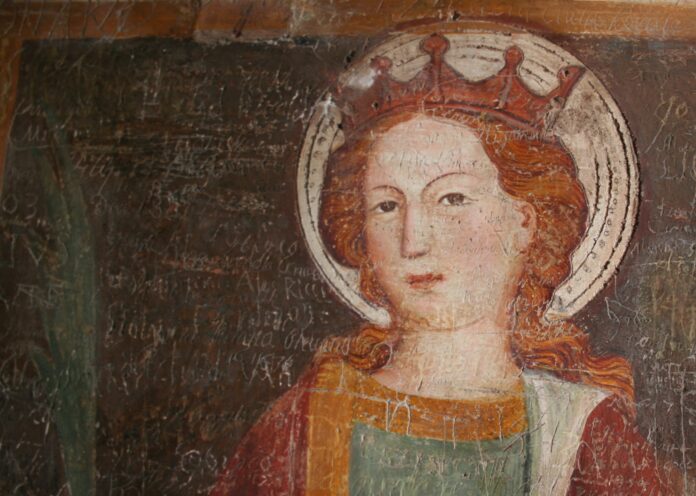Manyo is an intriguing concept that has various meanings and references across different contexts. It can refer to Manyoshu, a collection of ancient Japanese poetry, or it can be used as a name or a term related to different cultures or entities. The word “Manyo” carries a rich cultural and historical significance, making it a fascinating subject to explore. In this response, we will delve into the multifaceted aspects of Manyo, highlighting its origins, significance, and notable features.
Manyo, derived from the Japanese words “manyo” (many) and “shu” (collection), primarily refers to the Manyoshu, an anthology of poetry compiled in the 8th century. Literally translating to “Collection of Ten Thousand Leaves,” Manyoshu is a compilation of over 4,500 poems composed by various poets from different regions of Japan during the Asuka and Nara periods (7th to 8th centuries). It is the oldest existing anthology of Japanese poetry and offers valuable insights into the linguistic, cultural, and social aspects of ancient Japan.
The Manyoshu holds immense importance as it provides a window into the daily lives, emotions, and aspirations of the people from that era. It covers a wide range of themes, including love, nature, war, celebrations, and folklore, presenting a vivid picture of the society’s values, traditions, and beliefs. Manyo reflects the beauty and depth of Japanese poetry, showcasing the aesthetic principles and techniques prevalent during that time.
Apart from its literary significance, Manyo has inspired various art forms, cultural practices, and even names in modern times. Its influence extends beyond the realms of literature and permeates different aspects of Japanese society. The evocative imagery and timeless themes found in Manyo continue to captivate and resonate with people even today.
Now, let us explore five important things about Manyo:
1. Historical Significance: Manyoshu holds immense historical value as it provides valuable insights into the cultural and linguistic landscape of ancient Japan. The poems in Manyo shed light on the customs, beliefs, and traditions of that era, allowing us to understand the mindset and experiences of the people who lived during the Asuka and Nara periods. By studying Manyo, historians and researchers gain a deeper understanding of the socio-cultural fabric of early Japan.
2. Cultural Heritage: Manyo serves as a cornerstone of Japanese cultural heritage. Its poems have been studied, recited, and cherished for centuries, and they continue to be an integral part of Japanese education and artistic expression. Manyo’s influence can be observed in various art forms, such as calligraphy, painting, music, and dance. The beauty and elegance of Manyo’s verses have inspired generations of artists and continue to shape the artistic sensibilities of contemporary Japan.
3. Linguistic Significance: Manyoshu plays a crucial role in the study of the Japanese language. It provides valuable linguistic data, including vocabulary, grammar, and syntax, from the early stages of the Japanese language. Scholars and linguists analyze Manyo to trace the evolution of the Japanese language and its connections to other languages in the region. The anthology offers a unique opportunity to explore the linguistic roots and development of Japanese, deepening our understanding of its rich linguistic heritage.
4. Themes and Symbolism: Manyo encompasses a wide range of themes, providing a glimpse into the cultural and emotional aspects of ancient Japan. The poems explore nature, love, longing, beauty, patriotism, and spirituality, among other topics. Manyo poets often used vivid imagery and symbolism to convey their thoughts and emotions. The anthology’s themes and symbols have become enduring motifs in Japanese literature and continue to inspire contemporary writers.
5. Influence on Japanese Identity: Manyo has played a significant role in shaping and reinforcing the Japanese national identity. Manyo’s influence on Japanese identity can be seen through its pervasive presence in various aspects of Japanese society. The anthology’s themes, aesthetics, and values have become ingrained in the cultural fabric of Japan, contributing to a sense of shared heritage and pride. Manyo’s verses are often recited during traditional ceremonies and festivals, connecting present-day Japan with its ancient roots.
Moreover, Manyo’s impact extends beyond literature and into popular culture. Its influence can be found in contemporary Japanese music, where artists draw inspiration from Manyo’s poetic sensibilities to create lyrical compositions. Manyo’s influence can also be seen in the realm of fashion, with designers incorporating traditional motifs and patterns inspired by Manyo into modern clothing.
Furthermore, Manyo’s enduring popularity has led to the emergence of Manyo clubs and societies dedicated to its study and preservation. These groups organize events, recitals, and scholarly discussions to deepen the understanding and appreciation of Manyo among enthusiasts. Manyo has become a symbol of cultural heritage and a unifying force for those who recognize its significance.
Manyo, primarily referring to the Manyoshu anthology, holds immense historical, cultural, and linguistic significance. It provides valuable insights into ancient Japanese society, serves as a cornerstone of Japanese cultural heritage, contributes to the study of the Japanese language, and continues to shape and reinforce the Japanese national identity. Manyo’s enduring influence can be observed in various art forms, popular culture, and dedicated study groups. Exploring Manyo offers a captivating journey into the rich and diverse tapestry of Japan’s literary and cultural heritage.
Manyo, derived from the Japanese words “manyo” (many) and “shu” (collection), encompasses a diverse range of meanings and references across different contexts. One of the most prominent associations with Manyo is the Manyoshu, an anthology of ancient Japanese poetry compiled in the 8th century. The Manyoshu, meaning “Collection of Ten Thousand Leaves,” is a treasure trove of over 4,500 poems composed by various poets during the Asuka and Nara periods. It is the oldest surviving anthology of Japanese poetry and offers invaluable glimpses into the social, cultural, and linguistic aspects of early Japan.
The Manyoshu holds immense historical significance as a reflection of the times in which it was created. It provides a unique window into the lives and experiences of the people of ancient Japan, showcasing their emotions, aspirations, and daily struggles. The poems cover a wide range of themes, including love, nature, war, and folklore, painting a vivid picture of the society’s values, traditions, and beliefs. Manyo captures the essence of a bygone era and preserves it for future generations, serving as a historical and cultural time capsule.
Beyond its historical importance, Manyo has a profound impact on Japanese cultural identity. It is deeply ingrained in the collective consciousness of the Japanese people, representing a shared heritage and sense of national pride. Manyo’s verses are taught in schools, recited during traditional ceremonies, and celebrated in various cultural festivals. Its timeless themes and aesthetic principles continue to inspire and shape Japanese literature, music, art, and even fashion. Manyo has become synonymous with a distinct Japanese artistic sensibility, promoting a deeper understanding and appreciation of traditional beauty.
Linguistically, Manyo plays a vital role in the study of the Japanese language. The anthology provides valuable linguistic data, offering insights into the vocabulary, grammar, and syntax of early Japanese. Scholars and linguists analyze Manyo to trace the evolution of the language, its influences, and its connections to other East Asian languages. Through Manyo, the roots and development of the Japanese language are explored, shedding light on its rich linguistic heritage.
In terms of cultural symbolism, Manyo represents a bridge between the past and the present. Its themes, symbols, and imagery have seeped into contemporary Japanese culture, serving as a source of inspiration for modern expressions. Manyo’s influence can be observed in literature, where authors incorporate its motifs into their works, paying homage to the ancient poetic tradition. Additionally, Manyo’s impact extends to popular culture, where references to its verses can be found in music, films, and even advertising campaigns. This interweaving of Manyo into modern cultural expressions reinforces its relevance and keeps its spirit alive.
In summary, Manyo encompasses the Manyoshu anthology, which stands as a significant historical, cultural, and linguistic treasure of Japan. Manyo provides valuable insights into ancient Japanese society, serves as a symbol of cultural heritage, influences language studies, shapes contemporary artistic expressions, and acts as a bridge connecting the past and present. Its enduring presence resonates with the Japanese people, reminding them of their rich literary and cultural legacy. Manyo’s impact is a testament to the timeless power of poetry and its ability to transcend time, resonating with successive generations.






















